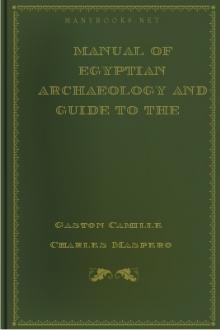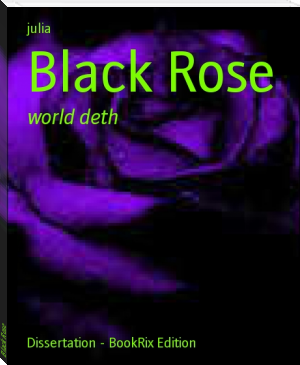Ancient America, in Notes on American Archaeology by John D. Baldwin (best thriller books to read .TXT) 📕

"It is in the form of a serpent, upward of 1000 feet in length, extended i
Read free book «Ancient America, in Notes on American Archaeology by John D. Baldwin (best thriller books to read .TXT) 📕» - read online or download for free at americanlibrarybooks.com
- Author: John D. Baldwin
- Performer: -
Read book online «Ancient America, in Notes on American Archaeology by John D. Baldwin (best thriller books to read .TXT) 📕». Author - John D. Baldwin
Those who seek to identify the Mound-Builders with the barbarous Indians find nothing that will support their hypothesis. Nevertheless, some of them have tried very strangely to give it aid by one or two quotations from early voyagers to America. The most important are taken from Brereton’s account of Gosnold’s voyage in 1602. The following occurred on the coast of Maine:
“Eight Indians, in a Basque shallop, with mast and sail, an iron grapple, and a kettle, came boldly aboard us, one of them appareled with a waistcoat and breeches of black serge, made after our sea fashion, hose and shoes on his feet: all the rest (saving one that had a pair of breeches of blue cloth) were naked.”
It is known that the Basques were accustomed to send fishing vessels to the northeastern coast of America long before this continent was discovered by Columbus. They continued to do this after the discovery. These Indians had evidently become well acquainted with the Basques, and, therefore, did not fear to approach Gosnold’s ship. Probably some of them had been employed on board Basque fishing vessels. Certainly their boat and apparel came from the Basque fishermen, and did not show them to be Mound-Builders. Of the Indians on the coast of Massachusetts, Brereton says:
“They had great store of copper, some very red, some of a paler color; none of them but have chains, earrings, or collars of this metal. They had some of their arrows herewith, much like our broad arrow-heads, very workmanly made. Their chains are many hollow pieces cemented together, each piece of the bigness of one of our reeds, a finger in length, ten or twelve of them together on a string, which they wear about their necks: their collars they wear about their bodies like bandeliers a handful broad, all hollow pieces like the other, but somewhat shorter, four hundred pieces in a collar, very fine and evenly set together.” He adds: “I am persuaded they have great store (of flax) growing upon the main, as also mines and many other rich commodities, which we, wanting time, could not possibly discover.”
If all this had been true, it would not serve the purpose for which it is quoted; for remains of the Mound-Builders have never existed in Massachusetts, and we should necessarily suppose these Indians had procured copper and copper ornaments by trading with the Basques or with other French voyagers. If only one or two Indians had been represented as wearing ornaments made of copper, this explanation could be readily accepted. But he avers that they had “great store of copper,” and adds, “None of them but have chains, earrings, or collars of this metal.” Therefore his statement is incredible. The following considerations will show why it must not be regarded as honest, unadorned truth.
1. Those interested in Gosnold’s voyage aimed to establish a colony on that coast; and all who served them, or were controlled by them, were easily moved to tell seductive stories of the country “upon the main.” The chief aim of Brereton’s account of this voyage was to incite emigration. Therefore he gave this wonderfully colored account of mines, flax-growing, copper chains and collars, and “other rich commodities” among the wild Indians of Massachusetts. Settlements on that coast, it was believed, would bring profit to those in whose interest he wrote. Gosnold actually proposed at that time to establish a colony on one of the islands in Buzzard’s Bay, and had with him twenty men who were expected to stay as colonists, but finally refused to do so. He saw a great deal of the Indians, and knew much more of their actual condition than the story admits.
2. Eighteen years later the Pilgrims landed at Plymouth from the Mayflower. Neither copper mines nor flax fields were then known in Massachusetts. No Indians with “great store” of copper and flax, and covered with copper ornaments, were seen or heard of by the Pilgrims, either at that time or afterward. In 1602, Brereton, or any other writer employed to write in such a way as would promote emigration, could tell such stories, and romance freely concerning the Indians, without fear of contradiction. Afterward, when the actual barbarism of the Indian tribes in New England and other parts of the country had become generally known, no one could describe any of these Indians as successful miners and flax-growers, and assert gravely that they had such stores of copper that “none of them” lacked great abundance of copper “chains, earrings, collars,” and the like, without being laughed at. Brereton’s story must be regarded as an invention designed to serve a special purpose, but not warranted by any thing seen during the voyage he describes. Neither in New England nor any where else in our part of the continent did the early colonists find Indians who worked copper mines and had “great store of copper.” What Brereton says was not true of any Indians known to our first colonists or to their successors. It corresponds to no reality found in any part of our territory during the last two hundred and fifty years. Therefore, to use his story in support of an absurd hypothesis is not a satisfactory proceeding.
AMERICAN ETHNOLOGY.It may be true that all the aboriginal peoples found inhabiting North and South America, save the Esquimaux, belonged originally to the same race. Some writers assume it to be true, although it seems strongly improbable, not to say impossible. If they were all of the same race, time and development, under different conditions of life, had divided this race into at least two extremely unlike branches. The wild Indians of North America were profoundly different from the ancient people of Central America and Peru. The Pueblo or Village Indians of New Mexico have scarcely any thing in common with the Apaches, Comanches, and Sioux. Even the uncivilized Indians of South America are different from those in the United States. Our wild Indians have more resemblance to the nomadic Koraks and Chookchees found in Eastern Siberia, throughout the region that extends to Behring’s Strait, than to any people on this continent. Those who have seen these Siberians, traveled with them, and lived in their tents, have found the resemblance very striking; but I infer from what they say that the Korak or Chookchee is superior to the Indian. See Kennan’s “Tent Life in Siberia.”
Mr. Lewis H. Morgan finds evidence that the American aborigines had a common origin in what he calls “their systems of consanguinity and affinity.” If it can be made to appear beyond question that these systems prevail and are identical every where from Patagonia to the Arctic Zone, his argument will have great force. But this has not yet been shown. He says: “The Indian nations, from the Atlantic to the Rocky Mountains, and from the Arctic Sea to the Gulf of Mexico, with the exception of the Esquimaux, have the same system. It is elaborate and complicated in its general form and details; and, while deviations from uniformity occur in the systems of different stocks, the radical features are, in the main, constant. This identity in the essential characteristics of a system so remarkable tends to show that it must have been transmitted with the blood to each stock from a common original source. It affords the strongest evidence yet obtained of unity in origin of the Indian nations within the region defined.”
But unity in race among wild Indians found within the region specified would be sufficiently manifest without this evidence. That the same system of consanguinity and affinity, with precisely the same features of identity, ever was extended over the whole continent, remains unproved. The supposed traces of it among the Pueblos are by no means clear. A more complete and accurate research is required to show that identically the same system ever has existed any where between the United States and Patagonia. A system not wholly unlike it, though not the same, might grow up any where in widely separated tribal communities of barbarous peoples, without doing any thing more than the tribal system itself to show a common origin in race.
The aborigines of America may have been originally all of the same race. There are some considerations in favor of this hypothesis which have been used by writers entitled to great respect; but it can not yet be claimed with reason that they have been able to settle this question beyond the reach of doubt, even in their own minds. Therefore, to speak moderately, it would be premature to assume that the Mound-Builders were even remotely of the same race with the wild Indians, from whom they were so different in all we know of them.
The attempt to establish this hypothesis of identity in race has given rise to a tendency to underrate the development of the ancient people of Mexico and Central America, and to lower the estimate of their attainments sufficiently to bring them within reach of close relationship to the wild Indians. The difficulty being reduced in this way, there follows an attempt to get rid of it entirely, and establish connection between these unlike peoples, by talking of “Semi-Village Indians.” But the hypothesis used in this case is not well warranted by facts. Such “Semi-Village Indians” as are supposed, really standing half way between the savages and the Pueblos, and being actually savages half developed into Pueblos, have never had a clearly defined and unquestionable existence here since the continent became known to Europeans. In the border region between the northern wild Indians and the old Mexican race there are exceptional communities formed by association or mixture, but we can not reasonably give them the significance claimed for the supposed “Semi-Village Indians.” Moreover, these exceptional communities are usually Pueblos whose habits have been changed and their civilization lessened by association with wild Indians, or in some other way. The Navajos began their present condition by fleeing to the mountains from the Spaniards. The Mound-Builders, who must have been, still more than the Pueblos, unlike the barbarous Indians, can not be explained by any reference whatever to such communities. If they were of the same race, they were far from being the same people.
Some ethnologists, whose suggestions are entitled to respectful attention whether accepted or rejected, specify considerations which they believe forbid us to regard the ancient Mexicans and the northern wild Indians as identical in race. They point to the well known fact that the fauna of the American continent below the northern frontier of Mexico is remarkably different from that between this line and the Arctic Sea. At the north, America abounds in species similar to those of Europe and Asia, with some admixture of forms wholly American, while at the south the old-world forms disappear, and the fauna of the whole region between Mexico and Cape Horn becomes “as peculiar





Comments (0)